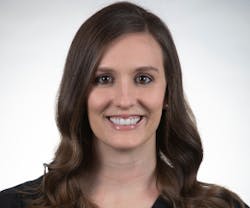Three tips for a successful morning dental huddle
By Kelly Sullivan, RDH
I love a close game. Whether it’s a buzzer-beater or a 40-yard Hail Mary to the end zone for a last-second touchdown, I love exciting final moments.
Those moments are rarely random. They usually require repetition and execution day-in and day-out by teams during practices. The coach’s playbook is full of different scenarios and plays waiting for the perfect moment to use them when the game gets down to the wire. When that time arrives, the coach calls a time out and has everyone huddle around to see what the big play will be.
During that brief huddle, morale is boosted, excitement is generated, and everyone is on the same page.
Morning huddles in your dental practice should do the same for your dental team.
The goal of the morning huddle is to create a few moments of collaboration where the whole team can come together to review the day’s schedule and discuss vital patient information. This will increase productivity and overall efficiency in the practice through effective communication. The last thing you want to do is drop the ball or miss out on an opportunity to best serve your patients and practice.
I believe there are a few vital aspects to a successful morning huddle.
Huddle format
The huddle needs to start promptly at the same time every morning and last for a designated length of time. Morning huddles are not meant to be office meetings and should not extend beyond 15-20 minutes. They should be brief and to the point. The best way to make sure the huddles remain brief is to have everyone stand. Standing tall creates significant chemical changes in the body that lower stress levels and increase performance. It also prevents everyone from lingering by creating a sense of urgency. People become antsy when they have to stand for too long.
Facilitator of the huddle
Whether you decide to take turns or have the same facilitator every morning, the responsibility of the person leading should be the same. The person needs to start the meeting on time, make sure the conversations aligns with the agenda, and create a sense of team accountability. Essentially, a good facilitator is dedicated to the regular rhythm of the meeting.
Huddle agenda
The agenda should be clear and organized. Your team needs to be reading the same playbook, so to speak, and be able to understand the key points of the discussion, such as the patients who are coming in, unscheduled treatment, insurance coverage, and same-day dentistry opportunities. Agendas need to be accessible and completed prior to the morning huddle. This helps create personal accountability for all team members and an opportunity for them to feel heard.
Any side conversations should be held after the huddle directly with the person or people involved. Solving issues typically requires debate, discussion, and a thorough review of all of the options prior to making a decision. Don’t eat up the morning huddle with big issues. Instead, conclude your huddle with highlights from the previous day. This helps energize your team and makes them excited for the day ahead.
Implementing a morning huddle will be a game changer for your practice. However, like most great skills, it takes practice and repetition before it becomes habit. I’ll conclude with one last sports quote by Wayne Gretzky: “You miss 100% of the shots you don’t take.” What do you have to lose? Take the shot. Implement a morning huddle and watch your practice win.
Free download: Morning Huddle Report Form
Editor's note: Originally posted in 2020 and updated regularly
Kelly Sullivan, RDH, is VP of operations at Dental ClaimSupport. Prior to joining Dental ClaimSupport in 2014, Sullivan spent seven years in the dental field, where she excelled as an insurance and treatment coordinator. With a quest for more knowledge and a desire to expand her clinical skills, she furthered her education in the dental field and became a registered dental hygienist

